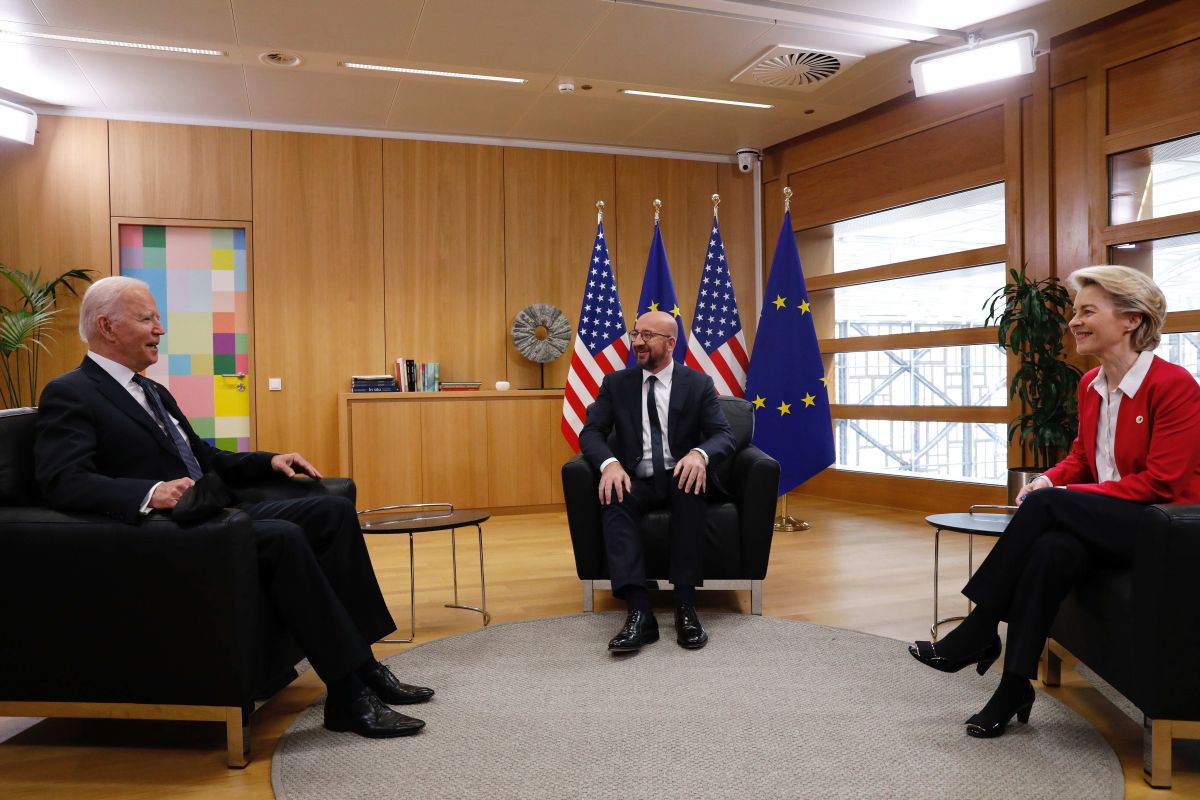U.S. Imposes Export Restrictions on Advanced Integrated Circuits
On 15 January, the U.S. Department of Commerce announced a “Framework for Artificial Intelligence Diffusion”. At its core are restrictions on the export of the most advanced integrated circuits (GPUs) used to teach (train) artificial intelligence (AI) models. Surprisingly, it strikes at the unity of the EU by dividing its members into two tiers, including 17 of the 27 EU members (one of them being Poland), of countries subject to restrictions on GPU purchases. The effects of these restrictions on Poland will not be noticeable in the short term, but in the long term they could negatively impact the ability to develop advanced AI models and implement Poland’s Digital Strategy 2035.
.png) Kevin Lamarque / Reuters / Forum
Kevin Lamarque / Reuters / Forum
What restrictions has the U.S. administration announced?
The package of restrictions divides countries into three tiers. The first one, referred to as close allies and partners of the U.S., includes 18 countries: 10 from the EU (e.g., Belgium, France, the Netherlands, Germany) and Australia, Japan, Canada, and Taiwan, among others. They can import advanced GPUs without limits. The second, largest tier includes African and Latin American countries, most of Asia and the Middle East (e.g., Israel) and some European countries, including Greece, Luxembourg, and Portugal, and all EU members admitted since 2004 (such as Poland). From 2025 to 2027, they will be able to import around 50,000 high-performance GPUs such as the Nvidia H100, currently most commonly used for teaching AI models (or around 100,000 if technology security agreements required by the U.S. are in place). However, companies from these countries can apply to the U.S. for special certification allowing them to purchase around 320,000 advanced GPUs, which does not count towards the state pool. At the same time, no company from Tier I countries may locate more than 25% of its computing capacity in Tier II countries and more than 7% in any of them. Tier III countries (some 20, including China, Iran, North Korea, Russia, and Sudan) have been banned from importing advanced GPUs altogether.
What is the official justification for the restrictions?
The U.S. motivates the restrictions by national security considerations. They are intended to make it more difficult for Tier III countries, and in practice primarily China, to use cutting-edge technology, as well as to prevent them from circumventing already existing sanctions. The lack of access to the latest GPUs is supposed to prevent them from creating more advanced AI models than those of the U.S. and Tier I countries. Combined with the restriction of access to cloud computing power offered by foreign data centres, which China often uses, this is meant to prevent them from using AI to, for example, design new weapons of mass destruction and weapons systems or conduct advanced cyberattacks. There are also protectionist themes in the rationale, such as strengthening U.S. economic power and ensuring that U.S. solutions are the ones used in AI development.
The classification of countries into Tier I is unclear—officially it is the robust export control regimes for dual-use technologies and the convergence of policies with U.S. national security and foreign policy interests. However, the failure to include many EU countries, as well as Israel and Switzerland, among others, is questionable.
What will be the consequences for the EU and Poland in the short term?
The short-term consequences for Poland are minor. The restrictions will only take full effect in 120 days. Moreover, the computing power generated by the 50,000 high-end GPUs envisaged for Tier II countries is high and would likely allow an effective generative AI model to be trained. Currently, around 5,000 advanced GPUs are installed in Poland, mainly in universities and research centres. This is 10% of the purchase limit up to and including 2027, which can be doubled in an agreement with the U.S. Moreover, purchases of up to 1,700 GPUs by a single public or private entity do not count towards the limit (it is unclear whether the U.S. has provided methods to counteract circumvention of the limit by setting up fictitious companies placing small orders). The division of EU members into two tiers, on the other hand, is inconsistent with the idea of the common market and has drawn criticism from a number of countries that have joined since 2004. It will weaken the credibility of U.S. digital diplomacy in the Union.
What might be the long-term effects and how can they be counteracted?
In the long term, the computing power of 50,000 advanced GPUs will not be enough to enable private entities from Tier II countries (including Poland) to create leading AI models. This may negatively affect the chances of implementing Poland’s digitalisation strategy by 2035. Tier II countries may be forced to import the most advanced AI models. Restrictions will also hinder the development of data centres by sector leaders from Tier I countries in Tier II countries.
Unequal access of EU countries to advanced GPUs may cause tensions within the Union and put additional strain on transatlantic cooperation in the technological dimension, especially in view of the expected policy of the second Donald Trump administration towards the EU. Already on 15 January this year, European Commission Vice-President Henna Virkkunen and Commissioner Maroš Šefčovič expressed concerns about the restrictions and the view that selling GPUs to the entire EU is in the interest of the U.S.
Poland and the EU can negotiate a change to the restrictions with the new Trump administration during the ongoing consultation phase with the use of the joint Trade and Technology Council, as well as the Polish presidency of the Union. They can work with U.S. companies that criticise the new restrictions, such as Nvidia, a key player in the production of advanced GPUs, on this issue. It would also be advisable for the EU countries included in Tier II to work together diplomatically for their inclusion in Tier I.






